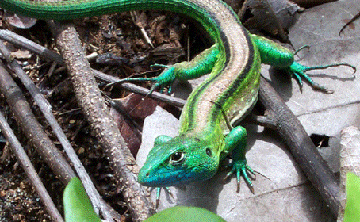Web site offers homepage for every one of Earth’s species
Web site offers homepage for every one of Earth’s species
Jeremy Hance, mongabay.com
February 27, 2008
Revolutionary website will provide detailed information on the world’s every species
|
|
Monumental may be the only way to properly describe the Internet’s Encyclopedia of Life. Its creators have set themselves the task of gathering accurate and detailed information on the earth’s known 1.8 million species until every tree, arachnid, rodent, and even virus will have its own in-depth webpage.
“The Encyclopedia of Life can raise our sights and expand our view of life on Earth,” said Jonathan F. Fanton, president of the John D. and Catherine T. MacArthur Foundation which provided the grant to start the project. “Just as a microscope reveals and helps us better understand the small and particular, the EOL will allow us to discern patterns previously unseen, illuminating relationships, identifying gaps in our knowledge, and suggesting opportunities for new avenues of inquiry. What was once viewed by many as ‘wishful thinking’ is now entirely possible and underway.”
The site was initially launched in May 2007, but yesterday it unveiled the first 30,000 species pages (1/60th of the total recorded species), including 25 pages that are examples of what the site will include in the future: incorporating large amounts of information from numerous sources and varies multimedia like photo collections and videos. The project’s goal is to have completed the initial 1.8 million recorded species by 2017. By then new discoveries will require new pages and the developers plan to continually update the site to follow along with the fast-changing world of biology.
 Male Rainbow Ameivas (Cnemidophorus lemniscatus) |
The idea for a species-wide database for scientific and public use was first proposed by pre-eminent biologist E.O. Wilson in an essay in 2003. “The launch of the Encyclopedia of Life will have a profound and creative effect in science,” Professor Wilson stated regarding the site’s opening. “It aims not only to summarize all that we know of Earth’s life forms, but also to accelerate the discovery of the vast array that remain unknown. This great effort promises to lay out new directions for research in every branch of biology.”
All of the information on the website is either written by experts or authenticated by them. Later this year the site will begin to allow the public to supply text and multimedia, although unlike other encyclopedic sites, such as Wikipedia, the information will be evaluated by experts before publication. “There are very many species for which we do not have high quality images or text. Think of these pages as invitations to contribute to EOL,” says Jim Edwards, the Executive Director of Encyclopedia of Life (EOL). In addition, the site is currently looking for curators, otherwise known as ‘authenticators’, to oversee the accuracy of the species pages in which they have expertise.
Dr. Edwards sees the vast encyclopedia as having a variety of users: “professional and citizen scientists, teachers, students, media, environmental managers, families and artists.
The site will link the public and scientific community in a collaborative way that’s without precedent in scale.”
The creators believe that the new encyclopedia will be more than just a place for information. EOL’s ease of access and in-depth information will help map diseases, ease the teaching of biology and life science, aid environmental and policy decisions, and shorten the time it takes to identify species new to science.
In its first day, the site proved almost too popular according to a blog entry written by David Shorthouse. The entry reported 11.5 million hits in six hours time which caused the site to go off-line for a couple hours.